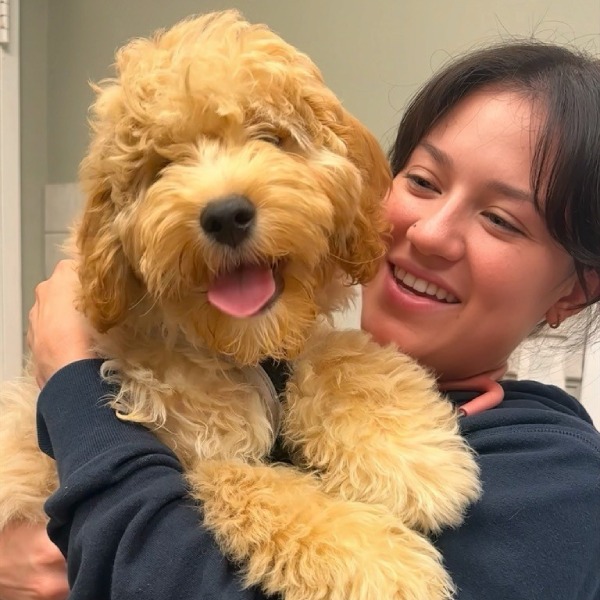Pet Ultrasound in Miami, FL
Pet ultrasound is an advanced diagnostic tool used to visualize your pet’s internal organs and structures. At Sunset Animal Clinic, we use ultrasound technology to assess your pet’s health with precision and accuracy, providing vital insights into a range of medical conditions. This non-invasive procedure allows our veterinary team to diagnose various issues, from internal injuries to organ abnormalities, and determine the most effective treatment plan.
What is Ultrasound?
A pet ultrasound, also called sonography, is a diagnostic imaging technique that uses high-frequency sound waves to create real-time images of your pet’s internal organs and tissues. Unlike X-rays, which provide detailed images of bones, ultrasound is ideal for examining soft tissues like the heart, liver, kidneys, and abdominal organs. This makes it a valuable tool in diagnosing conditions that may not be detectable through other methods.
Ultrasound is painless, non-invasive, and does not require sedation in most cases. It works by placing a small handheld device called a transducer on your pet’s skin. The transducer emits sound waves that bounce off internal structures, creating a visual image on a monitor that allows our veterinary team to assess the health and functionality of your pet’s organs.

When is an Ultrasound Necessary?
Ultrasounds can provide detailed information about various conditions that may not be evident through physical exams or X-rays. Some common reasons we may recommend a pet ultrasound include:
- Abdominal Issues: If your pet is experiencing digestive problems, weight loss, vomiting, or unexplained discomfort, an abdominal ultrasound can help detect blockages, tumors, or other internal abnormalities.
- Heart Conditions: Ultrasounds are commonly used to assess heart health, especially if your pet is showing signs of cardiac disease, including irregular heartbeat or breathing difficulties. An echocardiogram, a specific type of ultrasound, allows us to evaluate the heart’s structure and function in detail.
- Urinary Problems: Pets with urinary issues, such as difficulty urinating or blood in their urine, may need an ultrasound to assess the kidneys, bladder, and other parts of the urinary system. This helps us detect conditions like kidney stones, bladder infections, or tumors.
- Pregnancy Monitoring: For pregnant pets, ultrasound allows us to monitor fetal development and assess the health of the mother. It’s a safe and effective way to detect pregnancy early and ensure the well-being of both the mother and her offspring.
- Lumps or Masses: If your pet has a lump or abnormal growth, an ultrasound can help determine its size, location, and whether it’s solid or fluid-filled. This is crucial in assessing whether further diagnostic tests or treatments are needed.
Benefits of Ultrasound at Sunset Animal Clinic
Using pet ultrasound in Miami, FL, at Sunset Animal Clinic provides several benefits for both pets and their owners:
- Non-Invasive and Painless: Unlike exploratory surgery, ultrasound allows us to examine your pet’s internal organs without any discomfort or lengthy recovery times. The procedure is generally stress-free and can often be performed while your pet is awake.
- Accurate Diagnosis: Ultrasound delivers real-time, highly detailed images that give our veterinarians a clear understanding of your pet’s health. This helps in making accurate diagnoses and formulating effective treatment plans.
- Safe for Repeated Use: Since ultrasound uses sound waves rather than radiation, it’s safe for repeated use, allowing us to monitor chronic conditions or track the progress of treatments over time without harming your pet.
- Quick Results: One of the key advantages of in-house ultrasound is the ability to obtain immediate results. This allows our veterinary team to promptly diagnose and treat your pet, particularly in urgent situations where time is of the essence.
What to Expect During an Ultrasound
The process of performing a pet ultrasound is simple and comfortable for your pet. In most cases, no special preparation is required. Your pet will be positioned on a comfortable surface, and a small area of fur may be shaved to allow for better contact with the ultrasound transducer.
The veterinarian will then apply a small amount of gel to the skin, which helps the transducer move smoothly and transmit sound waves more effectively. The transducer is gently moved over the area being examined, and the sound waves create real-time images of your pet’s internal structures. Depending on the area of concern, the procedure typically lasts between 20 and 40 minutes.
If necessary, we can work closely with board-certified veterinary radiologists to review complex cases or get a second opinion. This ensures that we leave no detail unchecked when diagnosing your pet’s condition.
